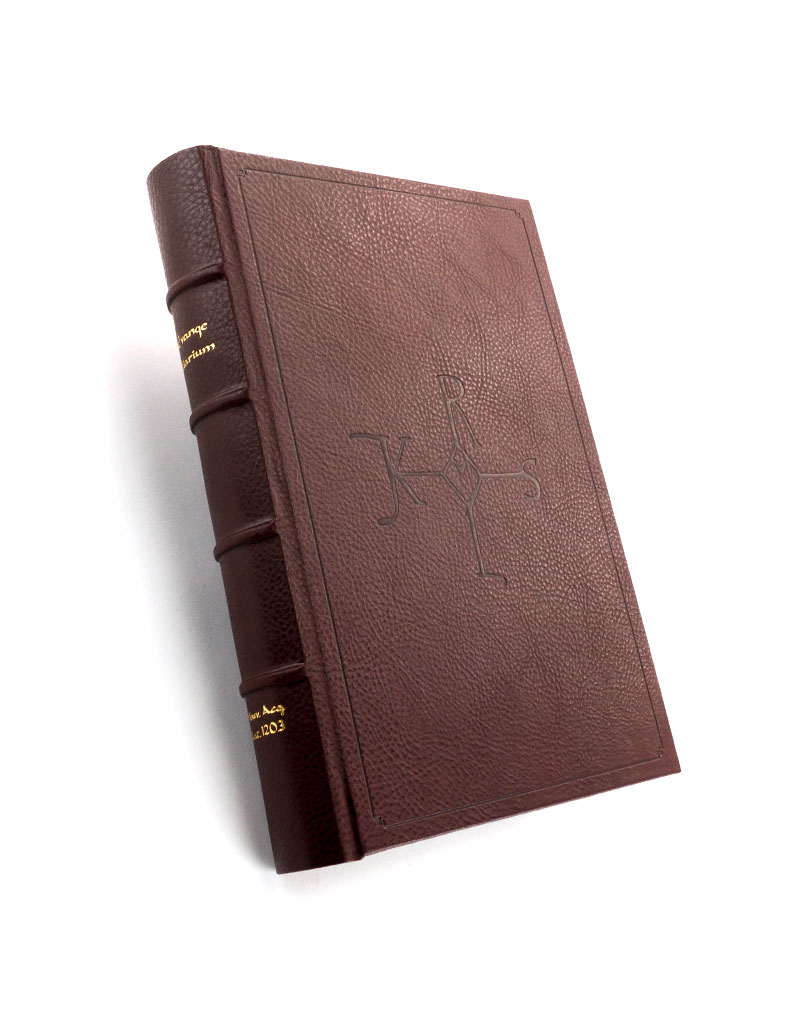Bibliothèque nationale de France, Paris, Ms. Nouv. acq. lat. 1203
Godescalc-Evangelistar
A Prayer Book for Charlemagne
Bibliothèque nationale de France, Paris, Ms. Nouv. Acq. Lat. 1203
Commissioned by Charlemagne and his wife between 781 and 783, the Godescalc Gospels as a liturgical luxury manuscript are of outstanding importance both in terms of art history and history. According to the wealth and rank of the high commissioners, it is equipped with all the means of writing and painting that were available at the court: the golden and silver ink stands on precious purple pastels, the sides are decorated with rich ornamentation, and a series of six impressive full-page miniatures opens the text.

Gold, Silver and Purple – An Imperial Manuscript
The splendid Gospels contain the Gospel readings (Gospel pericopes) in the liturgical sequence of the year, written in gold and silver on precious purple ground. The elegant, even and vigorous text results from the use of a combination of uncials, former Carolingian minuscule and Capitalis rustica.
Six Precious Miniatures
The manuscript contains six preciously ornamented full-page miniatures: four images of the Evangelists, a representation of Christ, as well as the image of a fountain of life, which here appears as a motif for the first time in an evangelistary. On 127 sheets in the format 310 x 210 mm beautiful ornamental decorations in frames, initials and ornamental pages cover all pages. The meticulous composition of the text and the richness of the ornaments make the Godescalc Gospels one of the most precious manuscripts from the Carolingian era.
Godescalc-Gospels
8th century
The splendor of the Heavens
Godescalc’s Poem honors Charlemagne as a victorious hero, the ideal king and a great bibliophile. Furthermore, the dedication to him goes along with a most precious decoration of the manuscript wich has a deep symbolic meaning: The precious materials gold, silver and magenta should remind of the splendor of the heavens and the eternal life. The word of God should be put down in the most appropriate way, “shining in dignified brilliance”.
On of the earliest existing manuscripts
The Godescalc Gospel is considered to be
the earliest known manuscript, written
in the scriptorium of the Court School of
Charlemagne in Aachen. From this school
today eight complete manuscripts as
well as a fragment are preserved.
The most famous manuscripts from this group
are the Gospels from Soissons and Lorsch.
The miniatures
The manuscript contains six preciously ornamented full-page miniatures: four
images of the Evangelists, a representation
of Christ, as well as the image of a fountain
of life, which here appears as a motif for
the first time in a evangelistary. On 127
sheets in the format 310 x 210 mm beautiful
ornamental decorations in frames, initials
and ornamental pages cover all pages. The
meticulous composition of the text and the
richness of the ornaments make the Godescalc Evangelistary one of the most precious
manuscripts from the Carolingian era.
The origins of the manuscript
In the poem on folios 126v-127r, the manuscript reveals its famous owners: The Gospels were commissioned by Charlemagne (reign: 768-814) and his wife Hildegard (died 783). A book should be made containing a sequence of gospel readings according to the course of the liturgical year. Begun in 781, and finished in 783, the manuscript was created during the year of Charlemagne‘s journey to Italy in 780/781, when the king visited the tomb of St. Peter – and Pope Hadrian I baptized his son Pippin. The writer of the manuscript, Godescalc, whose name bears the Gospels, accompanied Charlemagne on this journey.
Charlemagne’s Court School
The Godescalc Gospels are considered to be the earliest known manuscript written in the scriptorium of the Court School of Charlemagne in Aachen. From this school eight complete manuscripts as well as a fragment are preserved today. The most famous manuscripts from this group are the Gospels from Soissons and Lorsch. The artistic transitional position of the Godescalc Gospels between insular and antiquating elements is reflected, among other things, in the context of the evangelist images: The frameworks of the miniatures of Mark and Luke are decorated with antiquated wave-band and acanthus ornaments, while the framework of the portrait of John is adorned with insular interlacing patterns. The Godescalc Gospels, as well as the other manuscripts from the Court School in Aachen, are of great artistic significance due to their stylistic heterogeneity, symbolizing the great aim of Carolingian art: the recovery of the plastic and spatial values of late antique painting.



